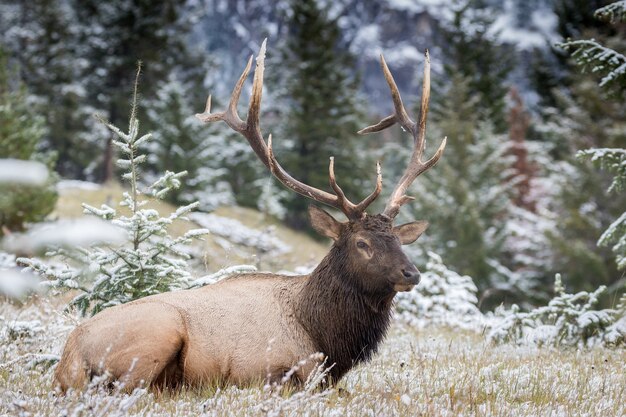Interesting Facts About White Tailed Deer

White-tailed deer are native to North and South America.
These deer are named after their signature white tail, which they flick up when alarmed.
Adult male white-tailed deer, called bucks, can weigh up to 300 pounds.
Female white-tailed deer, called does, are typically smaller and weigh around 150 pounds.
White-tailed deer have a reddish-brown coat in summer and a grayish-brown coat in winter.
The average lifespan of a white-tailed deer in the wild is about 6 years.
White-tailed deer are herbivores, primarily feeding on leaves, twigs, berries, and grass.
They are excellent swimmers and can cross rivers and lakes to find food or escape predators.
White-tailed deer have keen senses of hearing and smell, which help them detect predators like coyotes or mountain lions.
These deer are known for their graceful leaps and ability to run up to 40 miles per hour.
White-tailed deer have antlers, which are shed and regrown annually.
The size and shape of antlers can vary greatly between individual deer.
Bucks use their antlers to establish dominance and attract mates during the breeding season.
White-tailed deer communicate using a variety of vocalizations, including grunts, bleats, and snorts.
During mating season, bucks engage in intense battles to determine their hierarchy.
White-tailed deer are crepuscular animals, meaning they are most active during dawn and dusk.
A group of white-tailed deer is called a herd.
Interesting Facts About White Tailed Deer part 2
White-tailed deer have a specialized digestive system that allows them to extract nutrients from their plant-based diet.
These deer have a unique adaptation called a preorbital gland, which releases scent markings to communicate with other deer.
In the wild, white-tailed deer have natural predators such as wolves, bears, and humans.
White-tailed deer can jump over 8 feet high and 30 feet in one leap.
Deer hunting is a popular recreational activity in many parts of North America.
The population of white-tailed deer can fluctuate depending on factors like food availability and predation.
Female white-tailed deer usually give birth to one or two fawns in late spring or early summer.
Fawns are born with white spots on their reddish-brown coats, which help camouflage them in the forest.
White-tailed deer have an intricate mating ritual that involves nose-to-nose touching and sniffing.
These deer are highly adaptable and can thrive in a variety of habitats, including forests, grasslands, and even suburban areas.
In the winter, white-tailed deer form small groups to conserve body heat and forage together.
White-tailed deer have a two-chambered stomach to aid in digestion.
The gestation period for white-tailed deer is about 7 months.
White-tailed deer can detect predators from up to 300 yards away.
During the breeding season, bucks emit a strong scent called rut to attract females.
White-tailed deer have been known to leap fences and other obstacles in their quest for food or safety.
These deer have a specialized muscle called the jump muscle that allows them to perform their powerful leaps.
White-tailed deer have a complex social structure within their herds, with dominant and subordinate individuals.
Deer communicate using their ears, which can be moved independently to detect sounds from different directions.
White-tailed deer have a large heart, which helps supply oxygen to their active muscles during fast running.
Deer are a common sight on roadways, and vehicle collisions with deer are a significant concern in many areas.
The spread of urbanization has resulted in increased encounters between humans and white-tailed deer.
Deer have a natural instinct to freeze when they feel threatened, which helps them blend into their surroundings.
White-tailed deer are capable of reproducing at around one year of age.
The white-tailed deer population has rebounded in certain areas due to conservation efforts and habitat restoration.
These deer are known for their ability to adapt to changing environmental conditions.
Deer have a wide range of vocalizations, including grunts, bleats, and snorts, to communicate with other deer.
White-tailed deer are magnificent creatures that have captured the fascination of wildlife enthusiasts for centuries.

